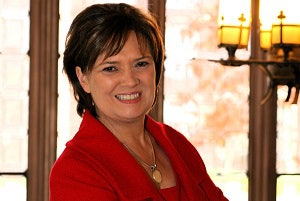Despite COVID-19 creating uncertainty in higher education, some colleges and universities have seen a rise in summer enrollment numbers.
At Winston-Salem State University (WSSU), 200 more students enrolled for the first section of summer courses, a 15% increase from last year. At Colorado Mountain College (CMC), credit headcount increased 32% and credit full-time equivalent hours rose 80% compared to the summer of 2019.
To meet the demands of students, the schools have introduced more course and section options. At CMC, 80 new individual classes are being offered.
“It is a bit surprising because of the predictions that enrollment was going to be dramatically down in the summer and in the fall,” said Dr. Lynn Pasquerella, president of the Association of American College and Universities.
 Dr. Lynn Pasquerella
Dr. Lynn PasquerellaWith the rise in unemployment, “people are understanding the need for more education and more preparation for an uncertain future,” she said.
Joel Lee, assistant vice chancellor for enrollment management at WSSU, said that in the past, there has been a correlation between a struggling economy and an increase in higher education enrollment.
“I think nationally, as the economy takes a little bit of a dive here, that’s usually a time when some people decide to go back to school,” he said. “But we don’t know enough yet to know if that’s definitively true for the COVID pandemic. Obviously, it is unprecedented in a lot of ways.”
To incentivize students, institutions are also offering discounts for their summer courses.
For example, CMC waived tuition, fees and the cost of books for those who qualify as new or returning in-district students, for in-state students who took credit courses this spring and for displaced workers who live in the CMC district.
Because many of CMC’s 11 campuses are located in resort communities, Dr. Matt Gianneschi, chief operating officer and chief of staff at CMC, said the local community was hit hard. Therefore, the decision to waive fees was made to help local businesses retain individuals and give displaced workers a reason to stay in the area.
“We felt like we needed to do something bold and we needed to do something quick,” he said. “And it was our responsibility to do what we could to contribute to the overall well-being and health of our economies.”
Marketing also played a factor in rising enrollment numbers at these institutions. This year, WSSU chose to target continuing students rather than a new population.
“[We were] just really trying to remind [students] that ‘hey, if spring didn’t go quite like you expected, and it didn’t go quite like most people expected, summer is here and even if you haven’t done summer school in the past, this may be the year,’” said Lee.
 Joel Lee
Joel LeeIndividuals also have more downtime because business and leisure enterprises are shut. Additionally, Lee said some students may take summer courses as an opportunity to make up for the spring semester, especially those who decided to drop a course.
“I think that continuing students have really stated through their actions that they don’t want a disruption in their education and they don’t want to stop going to school,” he added. “And so, they’ve been using the summer term as a way to keep their momentum going even if their spring momentum got delayed.”
The fall semester, though, might not see higher enrollment. As schools make the decision to reinstate face-to-face classes, continue online learning or introduce a hybrid model, many potential students are changing their original college plans for the fall.
According to a Junior Achievement survey, 30% of high school students are delaying their college start date and 13% plan to change their original chosen institution due to the COVID-19 pandemic.
“[This] will have a profound effect on many institutions that have focused on diversity and inclusion,” Pasquerella said.
Additionally, according a National College Attainment Network report, nearly 250,000 fewer returning students from the lowest-income backgrounds have renewed their Free Application for Federal Student Aid (FAFSA) for the 2020-21 cycle. Overall, FAFSA renewals are down nearly 5% compared to last year. Pasquerella said this indicates fewer students will enroll in universities in the fall.
Lee remains “cautiously optimistic” about fall enrollment. Currently, WSSU has seen freshman commitments rise by 9% compared to the same time last year.
“We will see what the future holds, adjust as best as we can and try to make sure our students don’t lose steam,” he said.
To prepare for the fall, CMC is implementing an “all of the above” strategy, according to Gianneschi. All the courses will undergo a formatting transition to be compatible with any potential outcome, such as a hybrid of face-to-face learning and online instruction.
Before the pandemic, CMC had plans to build enhanced technology-enabled classrooms with multiple screens and high-quality microphones to connect the institution’s campuses.
Gianneschi said the added technology can create more student accessibility and help faculty feel more comfortable engaging across the various campus sites.
“If we’re in a virtual like environment where it may be some face-to-face [instruction], but it’s a very limited number in the classroom because of social distancing, we at least have the ability to connect multiple classrooms,” he said. “And maybe have an experience that is not simply, the traditional asynchronous online course where you self-pace but a highly experiential, really engaged, sort of feels like a face-to-face experience albeit through the use of technology interfaces.”
Sarah Wood can be reached at [email protected].



















